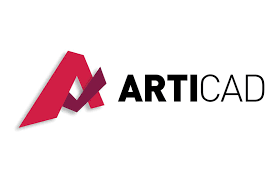As a homeowner, you might have been contemplating whether it’s worth investing in a kitchen island. A kitchen island is a versatile piece of furniture that can be used for various purposes. It can serve as a storage space, a preparation area, and even a dining table. In this guide, we will discuss everything you need to know before investing in a kitchen island.
Introduction to Kitchen Islands
A kitchen island is a freestanding or built-in piece of furniture that is typically placed in the center of a kitchen. It usually features a countertop, cabinets, drawers, and sometimes even a sink or stovetop. Kitchen islands come in various sizes, shapes, and designs, and can be made from different materials.

Benefits of Having a Kitchen Island
One of the most significant benefits of having a kitchen island is the additional storage space it provides. You can use the cabinets and drawers to store your kitchen gadgets, utensils, and even pantry items. Another advantage is that it can serve as a preparation area, allowing you to work on multiple tasks at once. For instance, you can chop vegetables on the countertop while cooking on the stove. Additionally, a kitchen island can also serve as a dining table, providing a comfortable and convenient space for your family and guests to eat.
Types of Kitchen Islands
There are several types of kitchen islands, and each offers different functionalities. A freestanding kitchen island is a movable piece of furniture that can be easily repositioned. A built-in kitchen island, on the other hand, is fixed in place and usually requires professional installation. A kitchen cart is a smaller version of a kitchen island and is ideal for small kitchens.
Factors to Consider before Investing in a Kitchen Island
Before investing in a kitchen island, there are several factors you need to consider. First, you need to assess your kitchen space to determine if you have enough room to accommodate a kitchen island. You also need to consider the layout of your kitchen and how a kitchen island would fit in with the existing furniture. Additionally, you need to think about your budget and how much you are willing to spend on a kitchen island.

Assessing Your Kitchen Space for a Kitchen Island
Before investing in a kitchen island, you need to assess your kitchen space to determine if it’s the right fit for your home. The ideal kitchen space for a kitchen island should have at least 3 feet of clearance on all sides to allow for easy movement around the island. You also need to consider the placement of your kitchen island and how it will affect the flow of your kitchen.
Tips for Designing a Functional Kitchen Island
When designing a kitchen island, you need to ensure that it’s functional and practical. One way to achieve this is by incorporating a sink or stovetop into the island. You can also add extra storage space by incorporating cabinets and drawers into the design. Additionally, you can install a breakfast bar or a dining area to make the island more versatile.

Materials for Building a Kitchen Island
Kitchen islands can be made from a variety of materials, including wood, granite, marble, and stainless steel. Each material has its advantages and disadvantages, and you need to choose the one that best suits your needs and preferences. For instance, wood is a popular choice for kitchen islands, as it’s durable and adds warmth to the kitchen. Granite and marble, on the other hand, are excellent choices for countertops, as they are heat-resistant and easy to clean.
Cost of Installing a Kitchen Island
The cost of installing a kitchen island varies depending on several factors, including the size, materials used, and complexity of the design. On average, a kitchen island can cost anywhere from £500 to £5,000 or more. If you opt for a custom-built kitchen island, the cost can be significantly higher.

DIY vs. Hiring a Professional
If you’re handy with tools and have some DIY experience, you can consider building your kitchen island. However, if you’re unsure about your skills, it’s best to hire a professional to ensure that the installation is done correctly. A professional can also help you design a functional and practical kitchen island that suits your needs and preferences.
Conclusion and Final Thoughts on Whether a Kitchen Island is Worth the Investment
In conclusion, a kitchen island can be a great addition to any kitchen and can offer several benefits, including additional storage space, a preparation area, and a dining table. However, before investing in a kitchen island, you need to consider several factors, including your kitchen space, budget, and design preferences. With proper planning and design, a kitchen island can be a valuable investment that adds value to your home.
Are you considering investing in a kitchen island? Contact us today to learn more about our custom CAD kitchen island design services.









